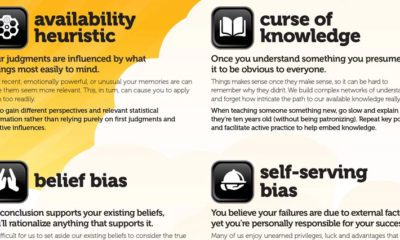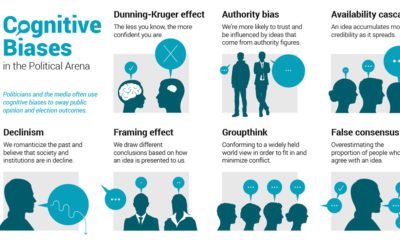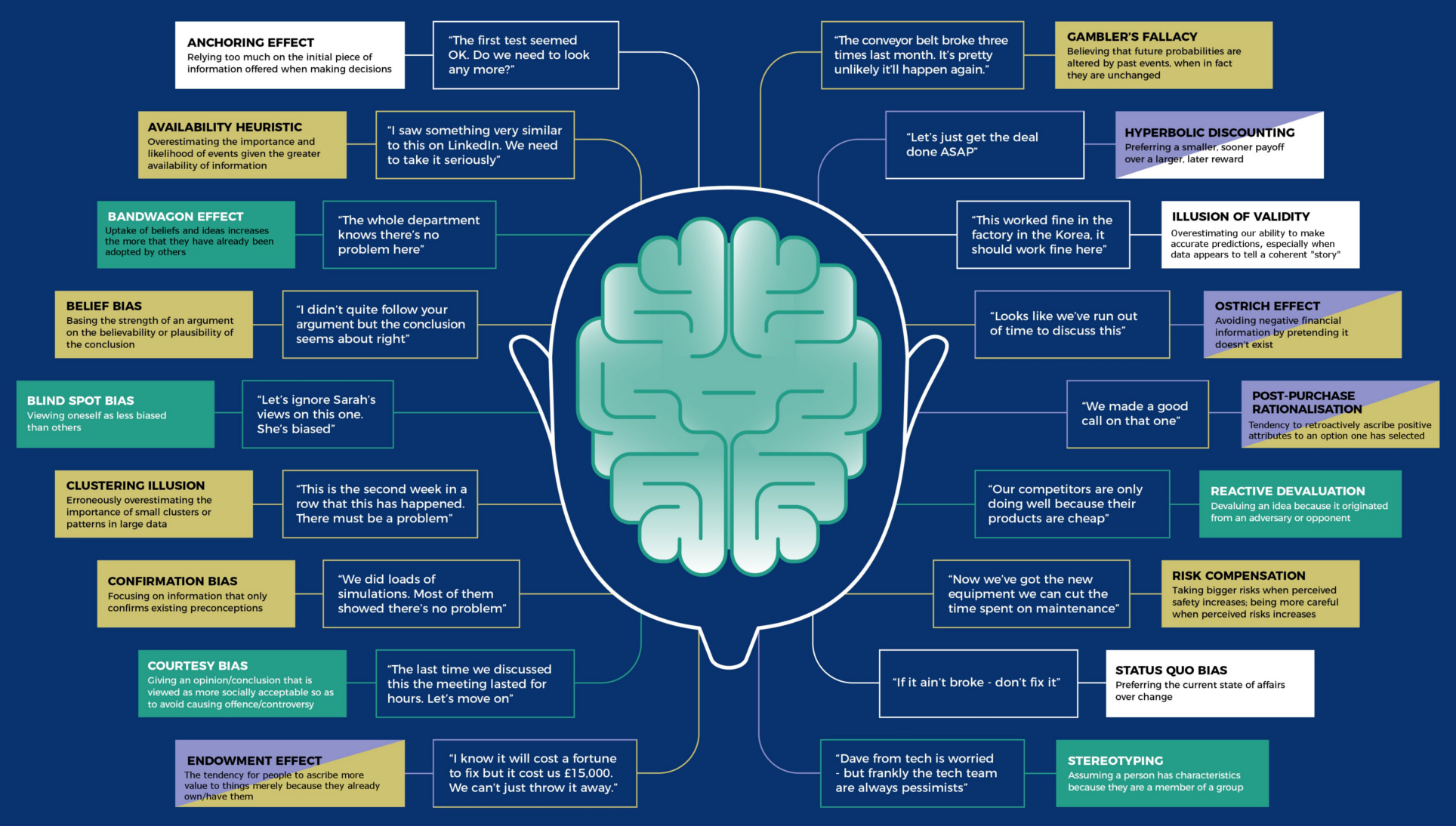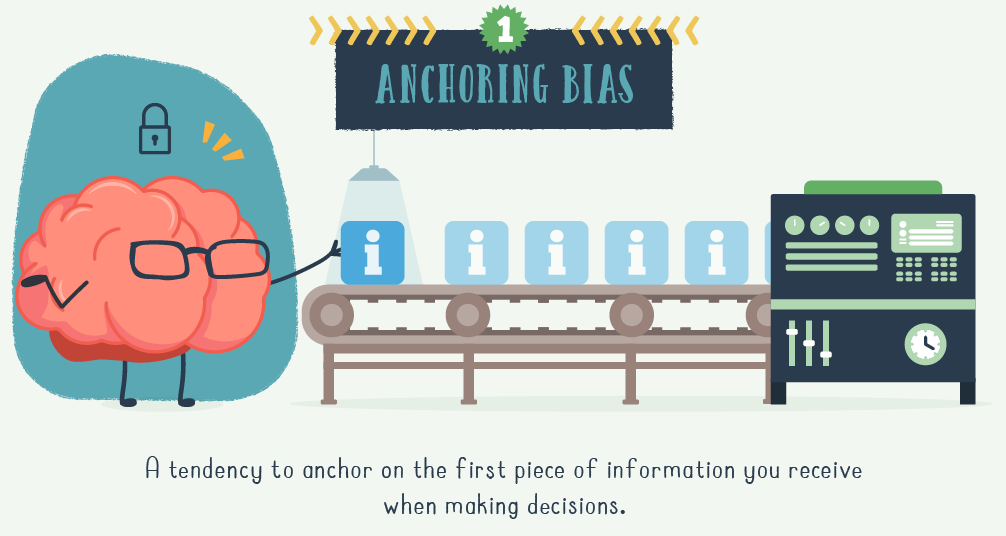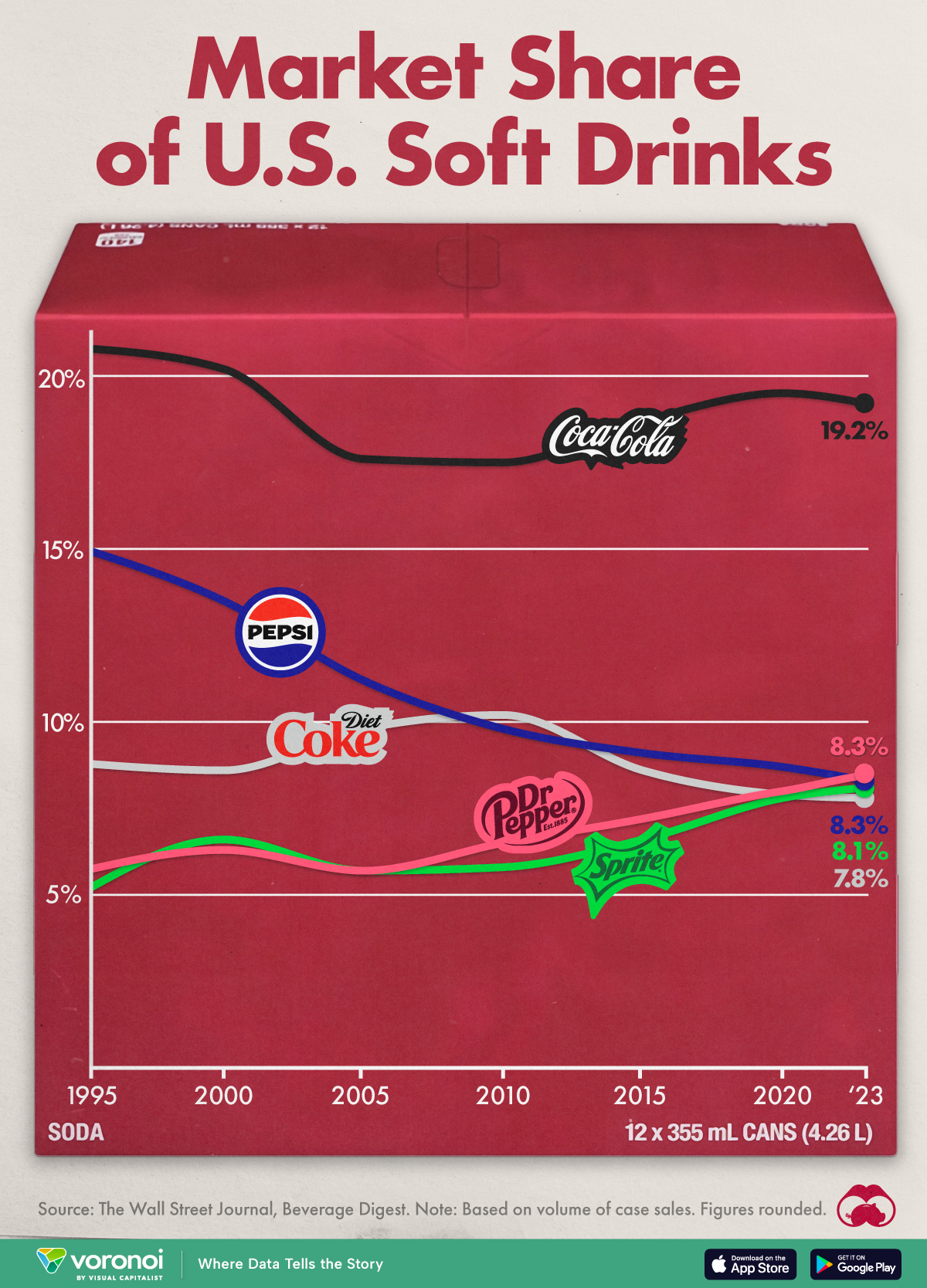Misc
50 Cognitive Biases in the Modern World

50 Cognitive Biases in the Modern World
Cognitive biases are widely accepted as something that makes us human.
Every day, systematic errors in our thought process impact the way we live and work. But in a world where everything we do is changing rapidly—from the way we store information to the way we watch TV—what really classifies as rational thinking?
It’s a question with no right or wrong answer, but to help us decide for ourselves, today’s infographic from TitleMax lists 50 cognitive biases that we may want to become privy to.
In the name of self-awareness, here’s a closer look at three recently discovered biases that we are most prone to exhibiting in the modern world.
Automation Bias
AI-infused applications are becoming incredibly good at “personalizing” our content, but will there come a time when we let algorithms make all of our decisions?
Automation bias refers to the tendency to favor the suggestions of automated systems.
Take Netflix, for example. Everything we see on the platform is the result of algorithms—even the preview images that are generated. Then, to harness the power of data and machine learning, Netflix categorizes its content into tens of thousands of micro-genres. Pairing these genre tags with a viewer’s history allows them to assign several of over 2,000 “taste profiles” to each user.
And while there’s nothing wrong with allowing Netflix to guide what we watch, there’s an enormous sea of content standing by. Estimates from 2015 claimed it would take nearly four years to watch all of Netflix’s content. Thousands more hours of content have since been added.
If we want to counter this cognitive bias, finding a new favorite series on platforms like Netflix may require some good old-fashioned human curiosity.
The Google Effect
Also known as “digital amnesia”, the aptly named Google Effect describes our tendency to forget information that can be easily accessed online.
First described in 2011 by Betsy Sparrow (Columbia University) and her colleagues, their paper described the results of several memory experiments involving technology.
In one experiment, participants typed trivia statements into a computer and were later asked to recall them. Half believed the statements were saved, and half believed the statements were erased. The results were significant: participants who assumed they could look up their statements did not make much effort to remember them.
Because search engines are continually available to us, we may often be in a state of not feeling we need to encode the information internally. When we need it, we will look it up.
– Sparrow B, et al. Science 333, 777 (2011)
Our modern brains appear to be re-prioritizing the information we hold onto. Notably, the study doesn’t suggest we’re becoming less intelligent—our ability to learn offline remains the same.
The IKEA Effect
Identified in 2011 by Michael Norton (Harvard Business School) and his colleagues, this cognitive bias refers to our tendency to attach a higher value to things we help create.
Combining the Ikea Effect with other related traits, such as our willingness to pay a premium for customization, is a strategy employed by companies seeking to increase the intrinsic value that we attach to their products.
For instance, American retailer Build-A-Bear Workshop is anchored around creating a highly interactive customer experience. With the help of staff, children (or adults) can assemble their stuffed animals from scratch, then add clothing and accessories at extra cost.
Nike also incorporates this bias into its offering. The footwear company offers a Nike By You line of customizable products, where customers pay a premium to design bespoke shoes with an extensive online configurator.
While there’s nothing necessarily wrong with our susceptibility to the Ikea Effect, understanding its significance may help us make more appropriate decisions as consumers.
What Can We Do?
As we navigate an increasingly complex world, it’s natural for us to unconsciously adopt new patterns of behavior.
Becoming aware of our cognitive biases, and their implications, can help us stay on the right course.
Misc
Visualizing the Market Share of U.S. Soft Drinks
Dr Pepper tied Pepsi as America’s No. 2 soda in 2024.
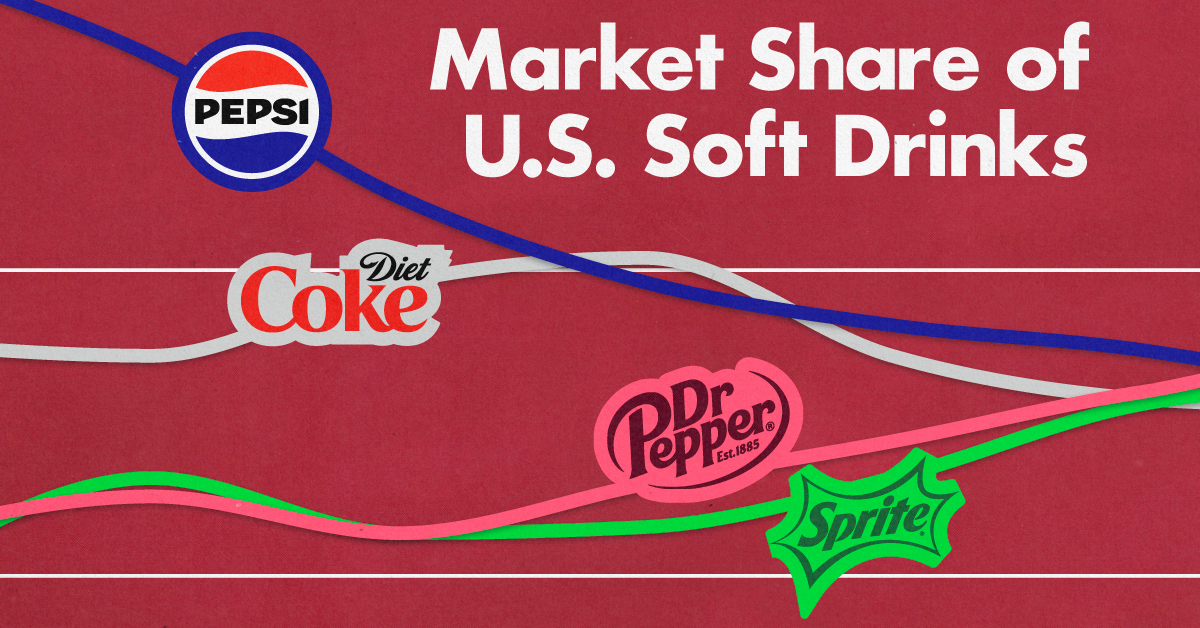
Visualizing the Market Share of U.S. Soft Drinks
This was originally posted on our Voronoi app. Download the app for free on iOS or Android and discover incredible data-driven charts from a variety of trusted sources.
Soda, with its sweet flavors and refreshing carbonation, is one of the preferred drinks among Americans, especially kids, and is also a significant part of the beverage and food industry.
In fact, the U.S. soft drink market has seen increasing growth and is anticipated to reach $388 billion in annual sales by 2025.
In this graphic, we visualize the change in market share of U.S. carbonated soft drinks between 1995 and 2023, based on sales volume data from Beverage Digest, as tabulated by The Wall Street Journal. Figures are rounded.
Dr. Pepper Ties Pepsi as America’s No. 2 Soda in 2024
Coke has reigned for decades as the best-selling soft drink in the United States.
At 130 years old, Coke also is the most consumed soda in the world, with an estimated 1.9 billion servings across 200 countries. As a result, Coca-Cola is one of the world’s most valuable brands.
While Coke has maintained 17-20% market share since 1995, Pepsi has seen a drop from 15.0% in 1995 to 8.3% in 2023.
Pepsi was surpassed by Diet Coke at the end of the 2000s but regained the second position during the 2010s. In 2024, however, Pepsi saw Dr. Pepper tie it as America’s No. 2 soda.
| Market Share of U.S. Soft Drinks | 1995 | 2000 | 2005 | 2010 | 2015 | 2020 | 2023 |
|---|---|---|---|---|---|---|---|
| Coke | 20.8% | 20.2% | 17.6% | 17.5% | 18.7% | 19.5% | 19.2% |
| Dr. Pepper | 5.7% | 6.3% | 5.7% | 6.5% | 7.2% | 8.0% | 8.3% |
| Pepsi | 15.0% | 13.5% | 11.2% | 9.8% | 9.1% | 8.7% | 8.3% |
| Sprite | 5.1% | 6.6% | 5.7% | 5.8% | 6.6% | 7.8% | 8.1% |
| Diet Coke | 8.8% | 8.6% | 9.8% | 10.2% | 8.6% | 7.9% | 7.8% |
Sprite and Diet Coke complete the list of best-selling soft drinks in the country, with 8.1% and 7.8% market shares, respectively. Combined, the three Coca-Cola brands (Coke, Diet Coke, Sprite) have 35% of the market.
-

 Demographics5 days ago
Demographics5 days agoCharted: EU Emigrants by Country
-
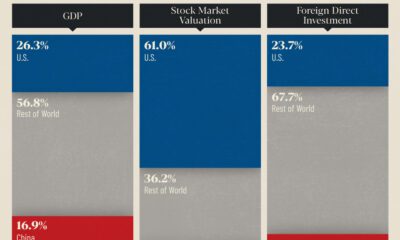
 United States2 weeks ago
United States2 weeks agoThe World’s Largest Economies: Comparing the U.S. and China
-
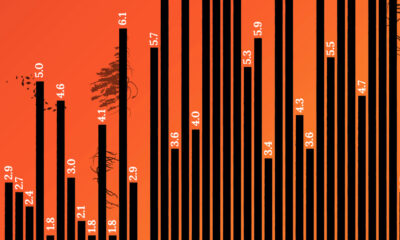
 Environment2 weeks ago
Environment2 weeks agoFour Decades of U.S. Wildfires (1983–2024)
-
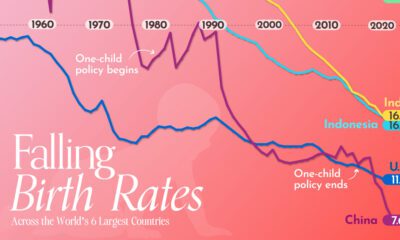
 Demographics2 weeks ago
Demographics2 weeks agoCharted: Declining Birth Rates in the Most Populous Countries (1950-Today)
-
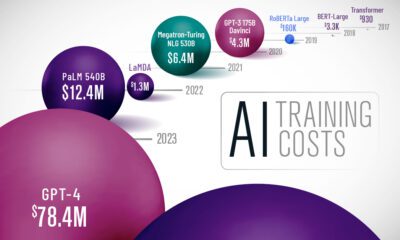
 Technology1 week ago
Technology1 week agoVisualizing the Training Costs of AI Models Over Time
-
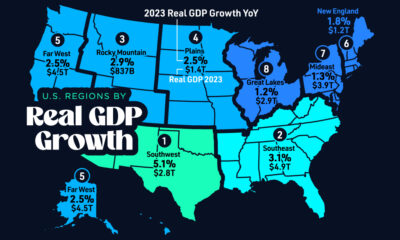
 United States1 week ago
United States1 week agoMapped: The Real GDP Growth of U.S. Regions in 2023
-

 Technology1 week ago
Technology1 week agoCharted: How Many Data Centers do Major Big Tech Companies Have?
-

 Jobs1 week ago
Jobs1 week agoCharted: Countries Offering Digital Nomad Visas

